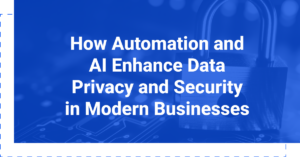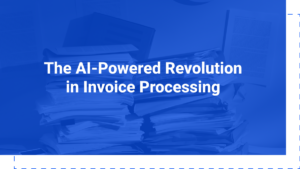Protecting Your Unemployment Insurance Program with Automation

- Industry insights
- • April 1, 2024
- • 4 min read
Share:
Table of Contents
Let’s stay in touch
Subscribe for more content handpicked just for you.
In any business, unemployment insurance is a crucial but tedious task for human resources teams to oversee. For the providers of insurance themselves, it can be a particularly time-consuming process — one that’s far too prone to errors, missed payments, and costly fees that could otherwise be avoided.
Like any data and document heavy industry, unemployment insurance benefits massively from automation to manage, collate, and identify data points across a massive set of information. With the right technology at your disposal, you can quickly and profoundly simplify the way you or your designated third-party administrator process and pay claims — providing drastic reduction in error and unnecessary payments.
Optimizing the Unemployment Insurance Process

Anyone who deals with the ins and outs of unemployment insurance is no stranger to the struggles brought on by repetitive and slow processes. Here are the most common issues insurance processors deal with, and how automation optimizes your business to fix that issue.
1. High operational costs — Between costs associated with peak periods and a higher demand on labor, UI processes without automation suffer from a greater burden on operations.
How Automation Helps: By streamlining UI operations into simple, repeatable tasks under a single intelligent technology, employees are vastly freed up to handle more complex tasks. Meanwhile, companies can scale their operations much more easily without the cost of having to hire extensively.
2. Inefficient processing — Manual routing and processing of essential UI information can lead to a lot of errors in final outcomes — which can subsequently result in missed appeals, incorrect payments, fees, and fines.
How Automation Helps: Because intelligent processing tools are trained to conduct certain procedures quickly and repetitively, you’ll avoid those costly mistakes. What’s more, with the right solution, you could also potentially identify ways to optimize existing processes even further by noticing patterns in data blocks and other facets of your business.
3. Overreliance on paperwork — With many current businesses still relying on outdated processing — largely involving physical paperwork vs. digital forms — the sheer volume of material to organize, record, and transfer to state agencies is too overwhelming for any company to process on time.
How Automation Helps: Automation can rapidly digitize paperwork, receiving essential information from state websites immediately in digital form and being able to extract necessary data automatically from the material rather than requiring manual review of physical documents.
4. Ineffective data security — When utilizing a legacy or manual system for UI, data is in the hands of analog technologies often not equipped to keep sensitive information secure from breaches and bad actors. A collapse in data security can spell disaster for UI providers and cause a long-term loss in trust and clients for your business.
How Automation Helps: Automation can be programmed to conduct all processes against whatever compliance your business is required to operate. Once implemented, you can rest assured knowing that all data is being handled securely and exactly how you intended it within your intelligent automation processes.
5. Lack of adaptability — From national databases to new technical integrations your IT team seeks to implement, UI providers should be seeking an adaptable solution above all. Unfortunately, legacy and manual systems often silo infrastructure and make it difficult to integrate with various platforms and tools.
How Automation Helps: While certain integration abilities will vary from solution to solution, a good modern automation platform will readily integrate into your existing IT infrastructure. In some instances, it’ll even draw upon or feed information to other aspects of your business as necessary, providing you with a holistically improved and interconnected business.
Automation Solutions That Integrate With Ease

The unique nature of the unemployment insurance landscape in the US demands that businesses can easily access and plug into nationalized databases of information. This ensures timely and accurate responses, appeals, and compliance with federal regulations for any UI processor.
One of the most widely used of these platforms is UI SIDES, or the Unemployment Insurance State Information Data Exchange System. This centralized digital interface connects State UI Agencies, employers, Third-Party Administrators (TPAs), and Professional Employer Organizations (PEOs), so they can simply and quickly request information from employers, PEOs, and TPAs for pertinent data necessary for investigating and paying unemployment claims.
With a system like Plextera, your business can rapidly integrate to the UI SIDES database with minimal to no additional software development necessary, ensuring a seamless connection to the platform. With a simple, cost-effective solution, you’ll be able to access and transfer the data you need with full confidence and security in the integration.
Bringing Next-Level Automation to Your Business

Turning your unemployment insurance program into a well-oiled machine only takes the right application of automation technology. Reach out to Plextera today to try a demo of our automation software and see how you can optimize your claim management processes seamlessly.


